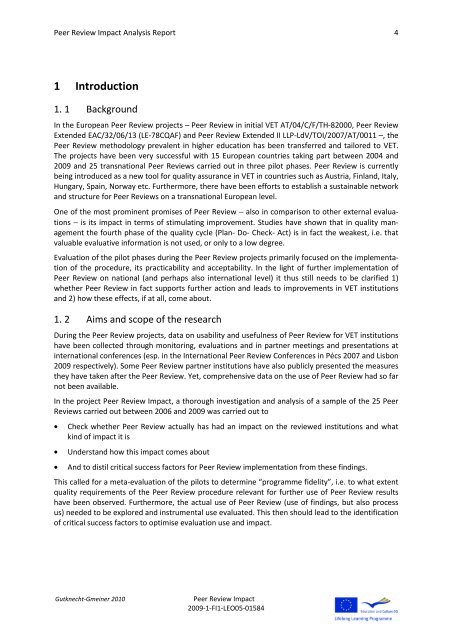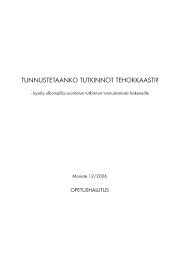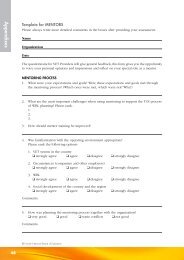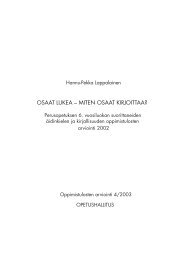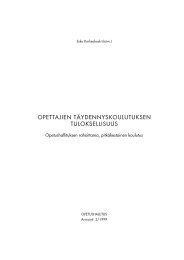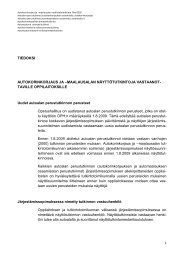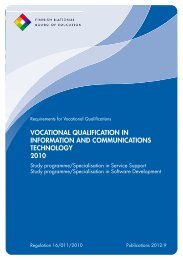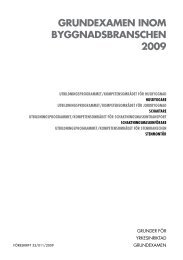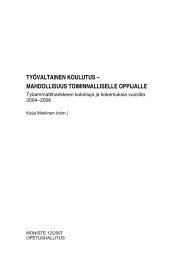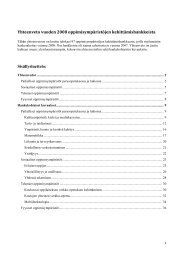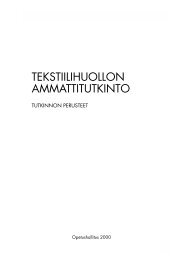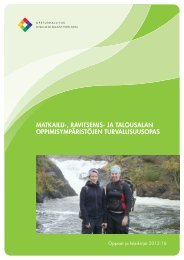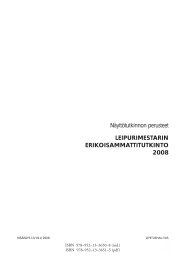Peer Review Impact Analysis Report - Peer Review in European VET
Peer Review Impact Analysis Report - Peer Review in European VET
Peer Review Impact Analysis Report - Peer Review in European VET
You also want an ePaper? Increase the reach of your titles
YUMPU automatically turns print PDFs into web optimized ePapers that Google loves.
<strong>Peer</strong> <strong>Review</strong> <strong>Impact</strong> <strong>Analysis</strong> <strong>Report</strong> 41 Introduction1. 1 BackgroundIn the <strong>European</strong> <strong>Peer</strong> <strong>Review</strong> projects – <strong>Peer</strong> <strong>Review</strong> <strong>in</strong> <strong>in</strong>itial <strong>VET</strong> AT/04/C/F/TH-82000, <strong>Peer</strong> <strong>Review</strong>Extended EAC/32/06/13 (LE-78CQAF) and <strong>Peer</strong> <strong>Review</strong> Extended II LLP-LdV/TOI/2007/AT/0011 –, the<strong>Peer</strong> <strong>Review</strong> methodology prevalent <strong>in</strong> higher education has been transferred and tailored to <strong>VET</strong>.The projects have been very successful with 15 <strong>European</strong> countries tak<strong>in</strong>g part between 2004 and2009 and 25 transnational <strong>Peer</strong> <strong>Review</strong>s carried out <strong>in</strong> three pilot phases. <strong>Peer</strong> <strong>Review</strong> is currentlybe<strong>in</strong>g <strong>in</strong>troduced as a new tool for quality assurance <strong>in</strong> <strong>VET</strong> <strong>in</strong> countries such as Austria, F<strong>in</strong>land, Italy,Hungary, Spa<strong>in</strong>, Norway etc. Furthermore, there have been efforts to establish a susta<strong>in</strong>able networkand structure for <strong>Peer</strong> <strong>Review</strong>s on a transnational <strong>European</strong> level.One of the most prom<strong>in</strong>ent promises of <strong>Peer</strong> <strong>Review</strong> − also <strong>in</strong> comparison to other external evaluations− is its impact <strong>in</strong> terms of stimulat<strong>in</strong>g improvement. Studies have shown that <strong>in</strong> quality managementthe fourth phase of the quality cycle (Plan- Do- Check- Act) is <strong>in</strong> fact the weakest, i.e. thatvaluable evaluative <strong>in</strong>formation is not used, or only to a low degree.Evaluation of the pilot phases dur<strong>in</strong>g the <strong>Peer</strong> <strong>Review</strong> projects primarily focused on the implementationof the procedure, its practicability and acceptability. In the light of further implementation of<strong>Peer</strong> <strong>Review</strong> on national (and perhaps also <strong>in</strong>ternational level) it thus still needs to be clarified 1)whether <strong>Peer</strong> <strong>Review</strong> <strong>in</strong> fact supports further action and leads to improvements <strong>in</strong> <strong>VET</strong> <strong>in</strong>stitutionsand 2) how these effects, if at all, come about.1. 2 Aims and scope of the researchDur<strong>in</strong>g the <strong>Peer</strong> <strong>Review</strong> projects, data on usability and usefulness of <strong>Peer</strong> <strong>Review</strong> for <strong>VET</strong> <strong>in</strong>stitutionshave been collected through monitor<strong>in</strong>g, evaluations and <strong>in</strong> partner meet<strong>in</strong>gs and presentations at<strong>in</strong>ternational conferences (esp. <strong>in</strong> the International <strong>Peer</strong> <strong>Review</strong> Conferences <strong>in</strong> Pécs 2007 and Lisbon2009 respectively). Some <strong>Peer</strong> <strong>Review</strong> partner <strong>in</strong>stitutions have also publicly presented the measuresthey have taken after the <strong>Peer</strong> <strong>Review</strong>. Yet, comprehensive data on the use of <strong>Peer</strong> <strong>Review</strong> had so farnot been available.In the project <strong>Peer</strong> <strong>Review</strong> <strong>Impact</strong>, a thorough <strong>in</strong>vestigation and analysis of a sample of the 25 <strong>Peer</strong><strong>Review</strong>s carried out between 2006 and 2009 was carried out to• Check whether <strong>Peer</strong> <strong>Review</strong> actually has had an impact on the reviewed <strong>in</strong>stitutions and whatk<strong>in</strong>d of impact it is• Understand how this impact comes about• And to distil critical success factors for <strong>Peer</strong> <strong>Review</strong> implementation from these f<strong>in</strong>d<strong>in</strong>gs.This called for a meta-evaluation of the pilots to determ<strong>in</strong>e “programme fidelity”, i.e. to what extentquality requirements of the <strong>Peer</strong> <strong>Review</strong> procedure relevant for further use of <strong>Peer</strong> <strong>Review</strong> resultshave been observed. Furthermore, the actual use of <strong>Peer</strong> <strong>Review</strong> (use of f<strong>in</strong>d<strong>in</strong>gs, but also processus) needed to be explored and <strong>in</strong>strumental use evaluated. This then should lead to the identificationof critical success factors to optimise evaluation use and impact.Gutknecht-Gme<strong>in</strong>er 2010<strong>Peer</strong> <strong>Review</strong> <strong>Impact</strong>2009-1-FI1-LEO05-01584


